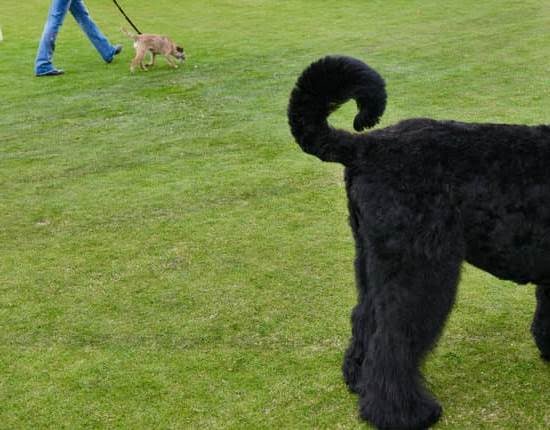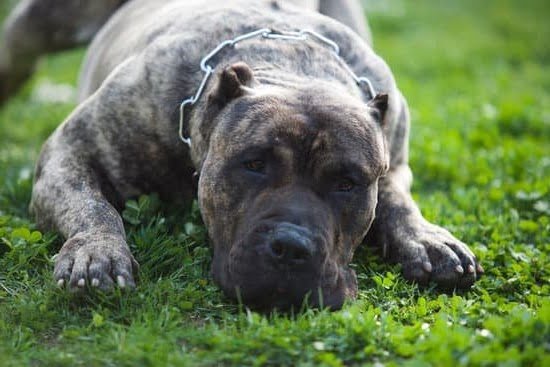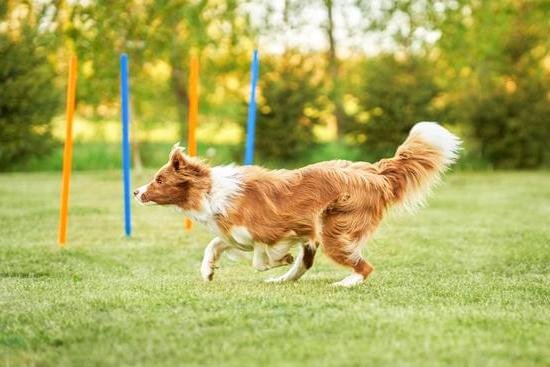Introduction
Adopting dogs from another owner offers you a chance to bring home a companion that already has a little bit of life experience. Rescues and rehomed pets often make incredible additions to the family and offer unconditional love, companionship, and loyalty that make it all worth it. Before you get started with training your new pup, there are a few things you should know.
First, adoption fees are usually low compared to purchasing a puppy from a breeder or pet store so the cost benefits can be great. You may also have access to medical records if possible, which can help prevent any potential health issues. Additionally, many owners of adopted pets have spent considerable time ensuring their dog is mentally prepared for their new home and family by socializing them around other people and animals. This indicates that although they may need basic obedience training, much of the groundwork is taken care of before you even begin.
Another key factor when training an adopted dog is patience and understanding. Any sudden move such as being rehomed, can cause stress in some dogs that leads to various behavioral issues, including fearfulness or aggression. As such it is important to take your time gradually introducing your pet’s new environment so they become comfortable – both physically and emotionally – before going into full-on training mode. Crate training can be particularly helpful here as well as providing toys for mental stimulation and rewards for good behavior. Allowing plenty of opportunities for playtime will not only provide more opportunities for positive reinforcement but also serve as important bonding moments between you two. Doing these activities on a consistent basis can help show your dog that they have found their forever home.
Finally, if behavioral problems still remain despite efforts made at the house it may be necessary to look outside the home for additional help in the form of professional trainers or obedience classes depending on what may be needed given your particular situation – sometimes management strategies are more effective than just entering into daily training sessions
Establishing Trust and Respect Between You and Your Dog
When training a dog you got from another owner, the first step is to build trust and respect between you and your pet. This means creating an environment in which your dog feels safe and is comfortable interacting with you. To do this, start by being predictable in how you interact with your dog — provide consistent rewards for good behaviors, avoid unpredictable reprimands, keep routines consistent every day (e.g., meals, potty breaks), and make sure to provide plenty of patient instruction, positive reinforcement, cuddles, treats, and playtime. Make sure to set boundaries for acceptable behavior; your dog needs to understand that certain behaviors are not acceptable. Lastly, practice relaxation techniques with your pup; take the time to leisurely walk together or spend some quiet quality time together so they know it’s ok to be calm around you. With patience and consistency, relationships between owners and dogs can become strong over time — both will benefit!
Setting Up the Appropriate Housing Environment
When you adopt a dog from another owner, it’s important to set up the appropriate housing environment for your new pet. This includes setting up an accessible place for them to sleep, providing safe areas for them to play, and ensuring that the space is free of any potential hazards. Some items to consider when setting up the housing environment include dog crates, toys, chewables and safe surfaces such as rugs or mats. Additionally, make sure to provide plenty of fresh food and water each day as well as comfortable bedding in their crate. Finally, ensure that the area is well ventilated with plenty of air circulation and light so that they have a comfortable environment in which they can relax. By setting up the right housing environment before bringing home your furry friend, you will be giving him/her a wonderful start to many years in their new home.
Learning the Basics About Your Dog’s Personality and Behaviors
If you’ve just adopted a dog from another owner, the best way to get your pup up to speed with your household is to understand their temperament. Knowing your pup’s personality traits and behaviors will allow you to better cater their individual training plan. You can do this by observing the pup’s behavior from the moment you bring them home. Does it seem timid or easily frightened? Are they eager to explore and energetic? The more information you can gather about how the dog has been used to behaving in its previous home, the better prepared you’ll be for successful training. Depending on the breed and age of your pup, consider taking them for a walk around their new area and spend some time in public places with them too. This allows them to familiarize themselves with their new environment and observe the rules so that when you start teaching specific commands such as ‘sit’, ‘stay’, or ‘no barking’ etc., there won’t be any confusion and deviations between what they have learnt before and what they are learning now.
Utilizing Positive Reinforcement Training Methods
When you adopt a dog from another owner, it is important to start with a fresh approach to training. Positive reinforcement methods are an effective way to train any dog, regardless of his or her past experiences or behaviors. The key idea behind positive reinforcement training is rewarding desired behaviors and ignoring undesired behaviors. This means avoiding punishments or scolding as much as possible, and focusing on reinforcing good behavior instead.
Start off by only giving attention for desirable behavior and ignore less desirable behaviors. You can do this by giving treats for things like sitting quietly when asked, walking without pulling on their leash, pottying in the appropriate area, etc. With consistency and patience you will set your pup up for success early on and make learning much easier than if you were to use intimidation as a teaching tool.
It’s also important to create structure in your home by establishing routines that your pup can expect every day. Routines create predictability which makes it easier for them to learn house rules such as commands associated with potty training, staying off furniture, not jumping on guests etc… Setting these boundaries through consistent routine will help build trust between yourself and your pup allowing him/her to thrive in their new home! Lastly be sure to vary the rewards used (treats aren’t the only thing that motivates dogs!) Use toys, verbal praise (ex: “good boy/girl”), petting sessions or even physical interaction such as a game of fetch -all of this will work together to boost overall morale and relationship strength between yourself and your pup!
Teaching New Tricks and Commands
When introducing a dog to a new home, it is important to establish boundaries and rules by establishing clear practices for obedience. The best way to train a dog that came from another owner is to create positive associations and reward desired behaviours, so the dog will learn the desired behaviour more quickly over time. It’s important to focus on commands such as “sit”, “down”, “leave it” and “come” when starting out. To get the dog accustomed to these commands start by giving treats after each command is given – this reinforces positive reinforcement for their behaviour.
Once the dog is more familiar with these basic commands, start introducing different tricks – such as walking backwards or shaking his paw – in a calm and consistent manner during practice sessions and experimenting with varying rewards. Don’t forget intermittently give your pup some attention or love while they are taking part in training-exercises – this serves as an additional reward which reinforces learning. As you introduce more complex tricks and tasks, it is beneficial for both you and your pup if these sessions are kept short – no more than 10-15 minutes at at time- so that the pup does not get overwhelmed and can maintain focus on the task at hand. If your pup shows signs of frustration or begins displaying undesirable behaviours such as barking or growling – pause the training session immediately and come back when they have refocused. Finally, remember to be patient with yourself and your pup throughout this process!
Modifying Perilous Behaviors With Non-Invasive Techniques
It can take some time to successfully train a rescue dog that has been adopted from another owner. It is important to remember that dogs have distinct personalities and have learned many behaviors throughout their life with the previous owner. To properly train these behaviors, it is important to start with non-invasive tactics that focus on rewarding positive behaviors rather than punishing negative ones.
Make sure your pup feels safe in their new home and take it slowly with training. For example, provide them treats when they behave correctly such as sitting on command or eliminating outside of the house instead of using the “no” method of punishment which can often cause fear and anxiety in dogs. Additionally, use a consistent and repetitive approach each time when getting an animal used to a particular routine or behavior so that they feel comfortable and familiar with the process. Always be patient and willing to give praise for desired behaviors as this will increase chances of success.
Involving Your Dog In Your Life Changes and Daily Activities
When you train a dog that you got from another owner, you should make sure to include them in your daily activities and life changes. This is especially important when transitioning the dog into a new home. If they’re well-adjusted and comfortable with their new environment, they’ll be more likely to embrace the training process and have an easier time picking up commands. For example, take them on regular walks so they can get used to the sights, smells, and sounds of your neighborhood; bring them along while running errands so they can become familiar with nearby parks and stores; and give them plenty of opportunities to play in your backyard or bond over some quality cuddle time on the couch. Also, try to keep their routine as consistent as possible by feeding and walking them at the same times every day. Showing them patience and understanding will go a long way in helping your pup adjust and bond with everyone in their new home.
Providing Adequate Exercise and Stimulating Activities
Exercise is essential when training a dog that you have acquired from another owner. You need to set up a consistent routine of daily walks, outdoor runs, trips to the park, or hikes on trails so that your dog can get their exercise and stimulation. This will help them burn off extra energy and build strong relationships with you, the environment, and other animals. During your walks or outdoor visits incorporate basic obedience exercises such as sit and stay. Rewards should be given often for good behavior. Activities that involve playtime with toys and puzzle games are also important for stimulating your pet’s mind in a positive way. Find activities that challenge their natural abilities like agility, search-and-rescue practice sessions, fly ball, and tracking games to both occupy their minds and release pent up energy they may have due to being in an unfamiliar home.
Conclusion
Training your new dog can be a daunting task, but with these tips, you can make the process more successful and have a better, happier dog in the end.
Having patience, positive reinforcement methods of training, consistency, and good communication all play an important role in helping the transition go smoothly. It is also very important to socialize your new pup by introducing them to other dogs and familiar people. This will help ensure that they become better family members and well-rounded pets. To ensure success, take things slow and celebrate even small steps when it comes to teaching obedience.
Finally, as a dog owner, it is also up to you to do your part; be present as often as possible with your pet as this will help nurture and build trust between the two of you. With time and dedication you can easily turn problems into possibilities for success. So give yourself plenty of time with this adjustment period until eventually your pup has adapted to their new home and routine!

Welcome to the blog! I am a professional dog trainer and have been working with dogs for many years. In this blog, I will be discussing various topics related to dog training, including tips, tricks, and advice. I hope you find this information helpful and informative. Thanks for reading!





